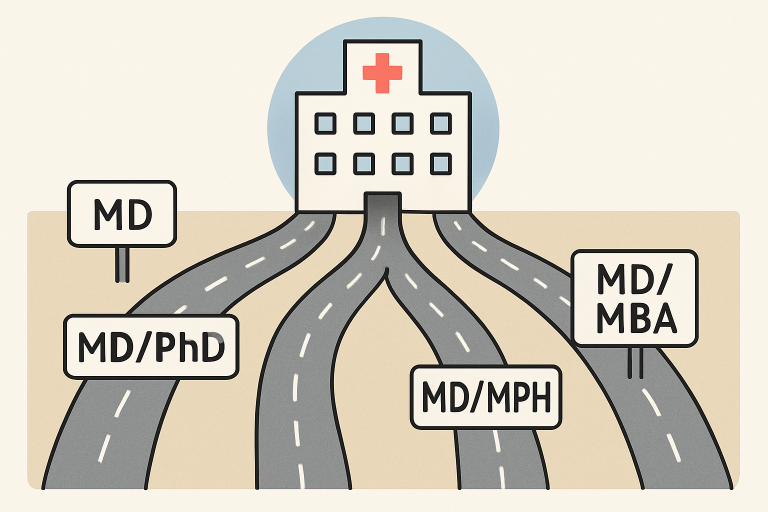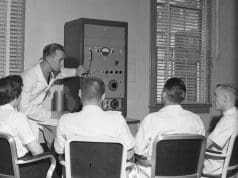
Becoming a distinguished medical professional often begins with a strong academic foundation and a commitment to continuous learning. Advancing through undergraduate and graduate studies builds the knowledge base necessary for complex medical training. Pursuing multiple degrees and specialties expands expertise and perspective, enabling physicians to serve patients with a broader understanding of health. Dedication, advanced education, and Multidisciplinary Medical Expertise create well-rounded practitioners capable of excelling in highly specialized areas of medicine.
Introduction to Multidisciplinary Medical Education
The dynamic landscape of healthcare has made it increasingly apparent that multidimensional expertise is beneficial and necessary for addressing complex patient needs. Medical professionals who understand the science of medicine and the intricacies of collaborative practice, research, and patient perspectives are in higher demand than ever. Pioneers in multidisciplinary fields, like Dr. Bradley Bakotic, exemplify how broad-based medical knowledge translates to better patient outcomes, more innovative solutions, and leadership across healthcare systems.
Today’s medical education is evolving rapidly, with institutions across the US and worldwide offering new pathways that bridge traditional boundaries between disciplines. This ongoing evolution is designed to produce healthcare providers equipped to innovate and adapt in response to ever-changing patient and societal needs. The focus is on equipping individuals not just with clinical skills but also with the problem-solving abilities needed in a multidisciplinary healthcare environment.
Accelerated Medical Degree Programs
Accelerated medical degree programs have emerged as strategic responses to the dual challenges of healthcare provider shortages and the escalating cost of medical education. Prestigious institutions, such as NYU School of Medicine, lead the way by offering three-year MD programs. These initiatives condense the traditional four-year curriculum without sacrificing comprehensive medical training or quality of clinical experience. Students in accelerated tracks benefit from early clinical immersion and faster entry into residency, often with reduced financial burdens.
Beyond the personal benefits for students, these accelerated pathways help address systemic issues, such as improving access to care in underserved communities. By graduating physicians more efficiently, accelerated programs directly contribute to expanding the physician workforce to meet the population’s growing needs. More on accelerated pathways and their impact can be found at the Association of American Medical Colleges.
Dual Degree Programs: Bridging Disciplines
Dual degree programs such as MD/MBA, MD/MPH, and MD/PhD are designed for students who seek to integrate knowledge from multiple fields into their medical careers. These transdisciplinary options equip future physicians to diagnose and treat patients, manage healthcare organizations, conduct groundbreaking research, and address public health challenges.
For example, the MD/PhD program is ideal for those aspiring to become physician-scientists, capable of translating research from the lab into meaningful clinical advances. Alternatively, MD/MPH programs enable doctors to apply a public health lens to their practice, effectively improving individual and community outcomes. These blended degrees ensure that the next generation of medical professionals is prepared for leadership roles that require broad-based expertise.

Interprofessional Education: Collaborative Learning
Interprofessional Education (IPE) is a cornerstone of modern medical training. It brings together students from various healthcare disciplines to learn, problem-solve, and develop care plans collaboratively. IPE enhances mutual respect among professionals, breaks down silos in education, and has been shown to improve patient safety and quality of care.
Medical students learn the value of shared expertise by engaging in simulations, case studies, and team-based clinical experiences alongside peers from nursing, pharmacy, dentistry, and public health. Numerous studies highlight that patients benefit when their healthcare providers are trained to collaborate from the start of their education. Resources like PubMed extensively document the principles and benefits of IPE.
Pathways to Physician-Scientist Careers
The demand for physician-scientists—clinicians who treat patients and conduct research—is rising, especially following the lessons learned during the COVID-19 pandemic. Programs that build physician-scientist careers emphasize robust training that integrates clinical care with rigorous research methodology.
Departments such as family medicine increasingly prioritize including evidence-based research in everyday practice. These professionals, equipped with Multidisciplinary Medical Expertise, uniquely contribute to bridging the gap between laboratory developments and patient care, ensuring that innovations are rapidly and effectively translated to clinical settings. Future physician-scientists are encouraged to pursue pathways emphasizing protected research time and research-focused mentoring.
Mentorship and Career Development Programs
Mentorship plays a central role in shaping medical career trajectories, with successful mentorship programs connecting students to experienced clinicians, researchers, and educators. These relationships provide crucial guidance, helping students understand the realities of different specialties and make informed decisions aligned with their interests and skills.
Initiatives like the Alumni Pathways Program facilitate networking, career planning, and sharing real-world insights through alumni engagement. Exposure to diverse role models and personalized advising maximizes students’ ability to build rewarding, well-suited careers that fully utilize their multidisciplinary training.
Innovations in Medical Curriculum
Medical schools are overhauling traditional curricula to keep pace with the continual advancement of science and the expanding responsibilities of healthcare professionals. The Mayo Clinic Alix School of Medicine stands out as an innovator, integrating clinical, scientific, and leadership training across all phases of education. By embedding courses on teamwork, communication, healthcare systems, and biomedical ethics within foundational science and clinical rotations, the school prepares students for today’s collaborative healthcare environment.
Other institutions follow suit, promoting curricular flexibility, early clinical experiences, and elective rotations in health technology, medical informatics, and interdisciplinary research. These changes ensure graduates are prepared to practice medicine and drive progress in healthcare at large. Learn more about major trends in curriculum innovation from The New England Journal of Medicine.
Conclusion
Multidisciplinary pathways in medical education are redefining what it means to be a physician in the twenty-first century. These programs foster adaptability, creativity, and the capacity for leadership across clinical, academic, and research domains. Students who embark on these academic journeys develop Multidisciplinary Medical Expertise, making them better prepared to offer outstanding patient care and contribute meaningfully to the advancement of medicine.



